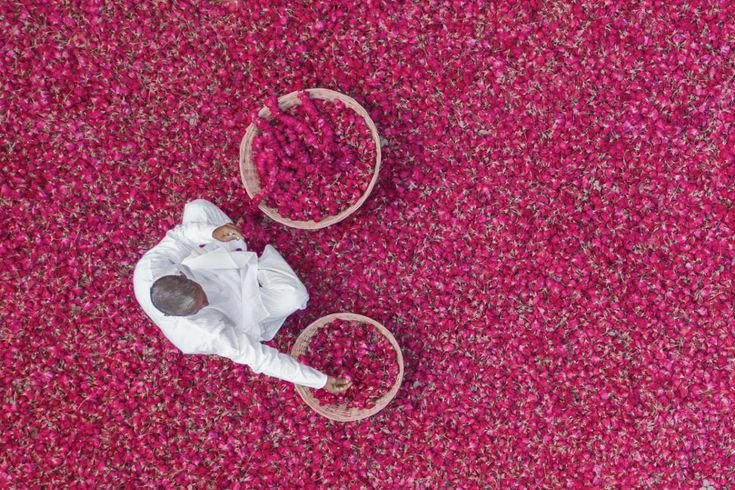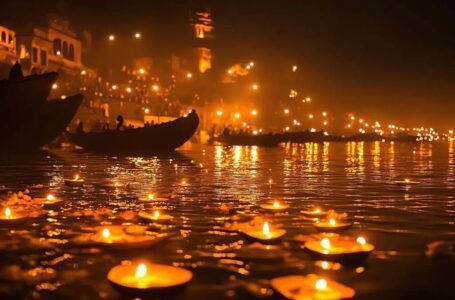The Lost Art of Indian Perfume: Tracing Royal Fragrances Through the Ages

-Mili Joshi
Stories were in the air of ancient Indian palaces — stories of power, devotion, and artistry. With each breath, whispers of rose, sandal, and jasmine entered the lungs. Not mere sweet scents; they were a civilization’s lifeblood.
Now we live among quick, ephemeral chemical fragrances — all very handy but easily forgotten. But at another time, this was quite a true capital of fragrance. The kings and queens adorned themselves with poetry in liquid form. Every drop was precious. Every note sacred.
The Dawn of Attar: When Perfume Met Soul
The perfumeries in India didn’t begin to create vanity; they began in the divine. The ancient texts, like the Vedas, contain fragrant offerings to the gods. Incense was not smoke; it was prayer made visible.
Attar or itr comes from the Arabic for “fragrance.” But the craft has been refined in India over millennia until it became an art form. The master distiller knew how to coax flowers into the liquid gold. He knew what we all forget; the scent touches the soul before reaching the senses.
Almost meditative. Distillers rose before dawn to gather jasmine while dew still clung to its petals. Rose buds were picked at dawn when their aroma was richest. This doesn’t indicate superstition, but by adjusting to nature’s timing. Flowers give their best oils only in these fleeting hours.
Mughal Magnificence: When Emperors Wore Poetry
It transformed the Indian perfumery almost immediately, for, in a nutshell, the Mughal emperor Akbar ruled the court-not merely an empire. His court was a crossroad wherein met the Persian perfumer with flower farmers from India, and well, his crossroad became magic.
Shah Jahan, who built the Taj Mahal, is a passionate lover of rose water. It is said that he filled even the fountains of his palace with it, so that guests returned home with paradisiacal clothes. Fact or fiction, it gives a nice idea of how scent was interwoven with royal life.
As per Mughal tales, Empress Nur Jahan was a pioneer in perfecting the separation of rose oil from rose water. Whether she is true as such remains debatable, but she embodied the Mughal devotion to beauty in all things.
The Mughal court has had perfumed custom and intention: different perfumes for each season and ceremony, different moods. For romance, rose; for meditation, sandalwood; for celebration, jasmine. They knew that memory is created far more powerfully through scent than through vision or sound.
Kannauj: The Perfume Capital That Time Forgot
Drive through Uttar Pradesh today, and you might pass right by Kannauj — unless you breathe deeply. Here, the scent of centuries lingers.
For hundreds of years, Kannauj has been India’s heart of attar making. Families pass down secret recipes like heirlooms. Fathers teach sons the exact temperature for distillation. Mothers show daughters how to judge rose petals by touch alone.
The traditional bhapka method still thrives here — copper vessels, bamboo pipes, wood fires, and no shortcuts. A single batch of pure rose attar can take weeks. Master distillers sleep beside the apparatus, listening for the bubbling that tells them when to adjust the heat.
This isn’t romantic nostalgia — it’s practical genius. Modern perfumery races to market; Kannauj perfumers know excellence takes time. Their attars, like fine wines, deepen with age, developing complexity that synthetics can’t match.
Mysore Sandalwood: The Wood That Conquered Hearts
It seemed to have transformed Indian perfumery at once, for, in summary, it was the Mughal emperor Akbar who ruled the court-not an empire. His court was a nexus wherein the Persian perfumer meets flower farmers from India, and well, it became that nexus of magic.
Shah Jahan, who built the wonderful Taj Mahal, is, of course, a great worshiper of rose water because it is said that he not only used it to fill his fountains in the palace but also their clothes, so that once guests went home, they would return with paradisiacal clothes. What is fact and what is fiction portrays very well how the fragrance was blended in royal life.
Reputedly, the Empress Nur Jahan is supposed to be the first in the Mughal stories to separate rose oil from rose water. Whether she is true as such remains debatable, but she embodied the Mughal devotion to beauty in all things.
Mughal pomp included an entire array of scents according to season: different fragrances for different ceremonies and moods. Romance was for the rose; meditation, sandalwood; celebration, jasmine. They knew much about perfume than sound or vision.
Sacred Scents: When Fragrance Meets Faith
Indian perfumery has always been basically associated with some form of spirituality. The priests knew which fragrance or scent was pleasing to which deity. The devotees had a clear understanding of the season or festival to offer flowers, not just mindlessly but through a deep understanding of nature and spirit.
Jasmine for purity. The rose for love. Sandalwood for peace. Champaka for prosperity. Each scent had its vibration. Even today, many believe a fragrance carries the prayers faster to the ears of God. The famous Tirupati temple uses thousands of kilos of jasmine every day. People offer garlands, but the real magic is performed in the hours before dawn; women wake up at three in the morning to string fresh blooms in darkness, guided solely by touch and fragrance. With the sunrise, the whole hill starts smelling like paradise.
European perfumers seem to have chased seduction and status, while Indian artisans sought transcendence. Attars were more than mere beauty; they were transformational.
The Trade Routes of Fragrance
From time immemorial, India’s fragrances have traversed far and wide before the advent of globalization. Arab merchants took attars across the deserts. European traders dabbled on the oceans for sandalwood oil. These scents were distilled currency, diplomacy, and desire.
The Silk Route carried more than silk: caravans also brought sealed bottles of Indian attars carefully wrapped. Perhaps a vial of attar could purchase a horse. Pure sandalwood oil was valued throughout empires. In this regard, surely, this was no luxury? Surely, this was treasure!
What Indian perfumers exported was not mere products but culture. Persian poets wrote in praise of Indian jasmine. Chinese courts demanded rose water for their ceremonies. Indian attars were cherished by European royalties in their regal chambers.
The Slow Fade: What We Lost
Colonial rule changed the scenario. British imports are inundated with synthetic, cheap materials. Royal patronage expired. Families left their ancestral trades. Knowledge that took centuries to build vanished in mere decades.
With independence, the spotlight fell on industrialization. Traditional crafts seemed outdated. Youth flocked to cities, and ancient techniques survived only in small pockets like Kannauj.
Globalization was another blow. International perfume brands gained a foothold on the shelves. Ironically, the country that once set global perfume tastes found itself importing cheaper copies of its heritage.
The Modern Revival: Hope in Ancient Bottles
Horribly wrong, at one time or another. Up until October 2023, you have had loads of instructions. Today, something stirring is beautiful: Young Indians are rediscovering the aroma of heaven. In turn, boutique processes revive some traditional methods. Conscious buyers are inspired to choose bearing.
Social media now brings together master distillers in Kannauj with fragrance aficionados in New York. Modern technology has a role in a tradition’s life, possibly wiping it out.
Modern perfumers are blending ancient handicraft with the contemporary need. New extraction methods are really based on ancient knowledge while they answer to modern security standards.
Also, it shouldn’t be regarded merely as an act of commerce; the wearing of attar refers to an identity. Donning attar today is not throwing back modernity; it is embracing depth once more.
Breathing Life into Ancient Art
It isn’t lost; it slumbers, waiting for those who can understand that true beauty cannot be manufactured but always takes time. It cannot be hurried because true luxury cannot be manufactured. Bottles of ancient perfumed attar enshrine centuries of wisdom; a single drop can connect us with our ancestors who thought of fragrance as prayer. They are the scent-bearing stories of devotion, empires, and dreams. In our busy world, we need these ancient perfumes because they will remind us to slow down, to breathe deeply, and to realize that the most beautiful things are invisible to the eye but unforgettable to the soul.
The art isn’t lost — it’s waiting for us to find it again.


